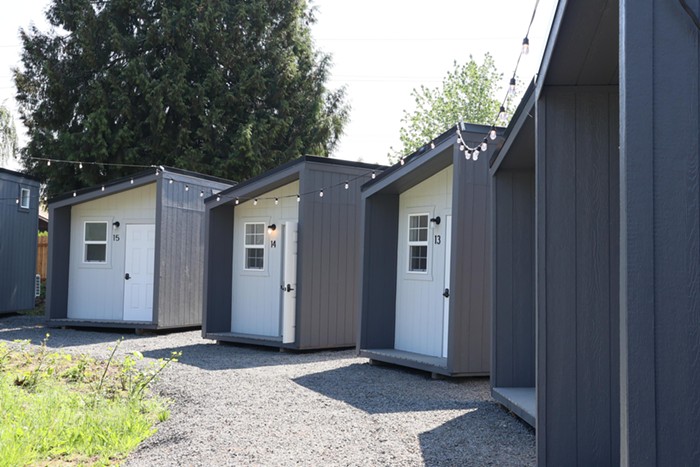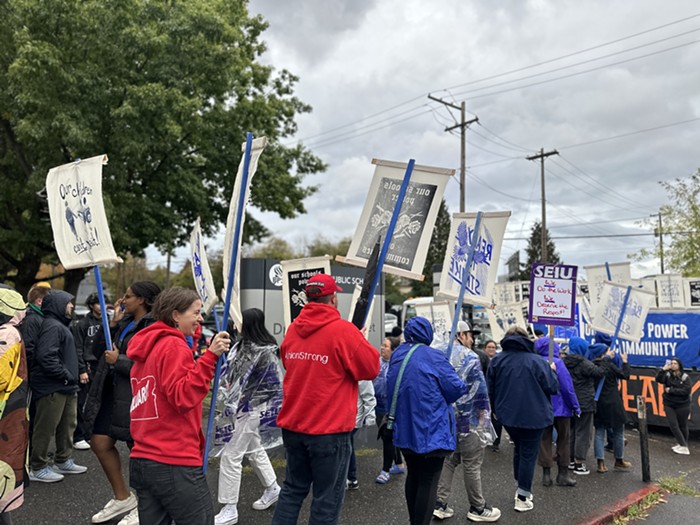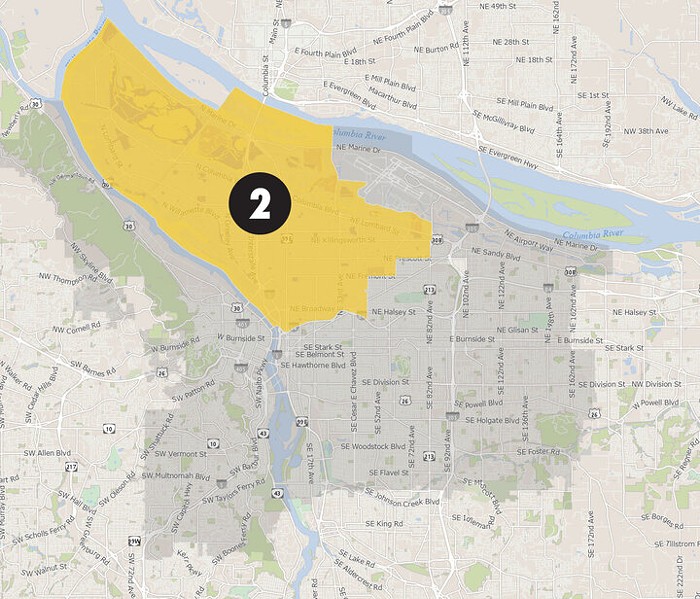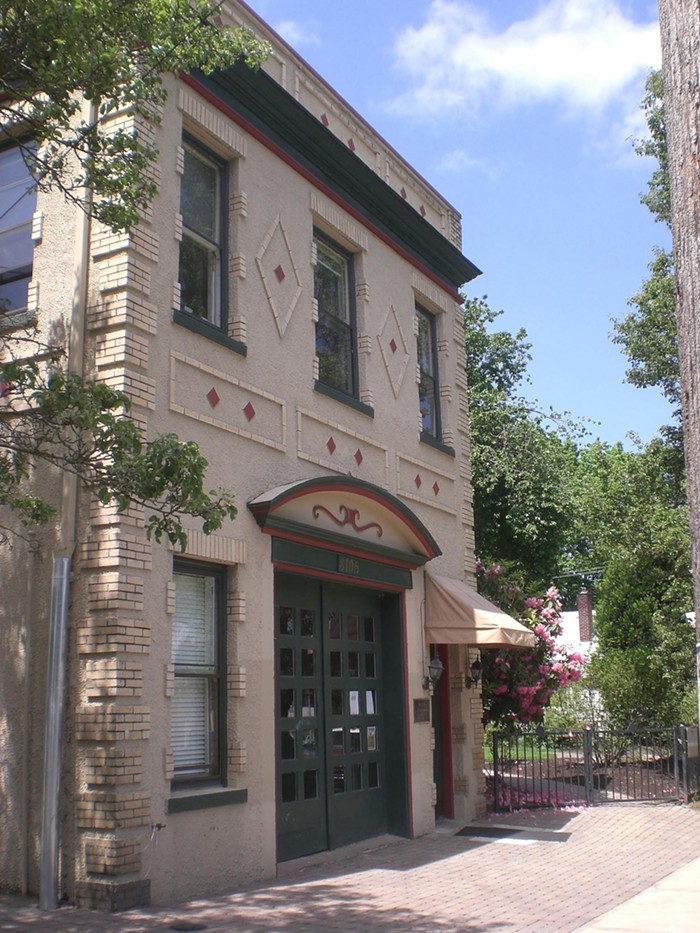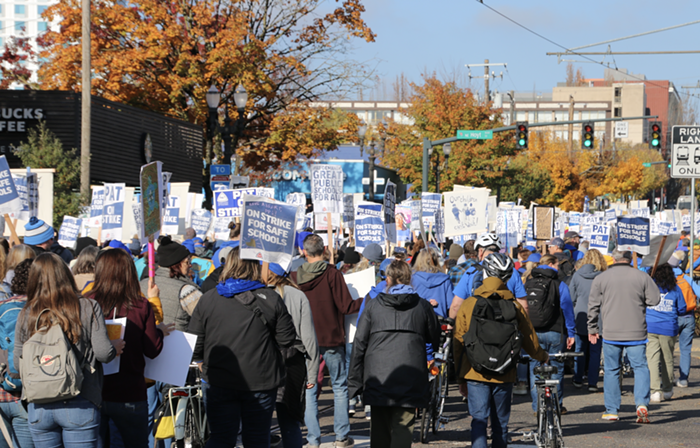FINALLY! After six long years of planning, Multnomah County commissioners last week signed off on the final design for the new Sellwood Bridge. But after all those years of painstaking public process, county engineers tried to radically change the design at the last minute—a move that angered bike and pedestrian advocates and Mayor Sam Adams.
Flexing his mayoral power in a brief political scramble, Adams got his way on the design of a bridge, which will be the most expensive transportation project of his time in office.
On Thursday, July 19, the Multnomah County Board of Commissioners approved the final plans for the span that's slated to replace the prone-to-collapse 90-year-old South Portland bridge. The final design includes some cost-cutting measures that will slice $2 million off the bridge's $299 million construction cost. However, not included among these measures is a controversial last-minute move to save roughly $300,000 by cutting out bike lanes and a wider sidewalk from one side of the bridge. The "asymmetrical" proposal angered Mayor Adams and bicycle and pedestrian advocates, many of whom have closely followed the six-year planning process.
"I don't understand why you proposed such a radical change at the last minute," Adams reportedly told a public stakeholder committee on Monday, July 16, fiercely defending the original, symmetrical bridge design, which has two bike lanes and a roomier sidewalk in each direction.
Earlier, the Bicycle Transportation Alliance and the Willamette Pedestrian Coalition—both members of the bridge's public stakeholder group—contacted Adams about their concerns. They argued that the new design was inconvenient for foot and bike traffic and that the county sprung the designs on them with little notice.
Adams' office declined to comment for this story. But according to people present, including Bikeportland.org Editor Jonathan Maus, Adams was adamant and even a little pushy about getting the lane back.
"I think Sam was in the position to—and really relished the chance to—be the one asking the tough questions," says Maus. When Adams learned the asymmetrical design would account for only $300,000 of $2.3 million in proposed changes, Maus says, he was livid. In response, the county quickly changed its tune. Three days later, the county rubberstamped the two-lane design.
The engineers' last-minute changes were in response to the bridge's new higher-than-expected budget, which now stands at $299 million—$30 million above the last estimate. Reasons for the price jump are numerous, says Multnomah County spokesman Mike Pullen: Fuel and steel prices have gone up, the local hillsides are more prone to landslides than originally thought, and the project has learned it needs to remove 100,000 tons of contaminated dirt from the river's west bank. Still, Pullen stresses the current budget is still less than the bridge's original $330 million estimate.
Though the asymmetrical design could save money, delaying construction a month to allow for another public comment period would cost $1 million. For a project that has struggled for every penny, its current $30 million projected overrun is a lot. The revised budget for the new bridge now has the city on the hook for $84.5 million—up $11 million from the last estimate. At the July 16 meeting, Adams complained the project's new price tag would mean scouring his budget for funds.
The county is responsible for $19 million, and Multnomah County Commissioner Deborah Kafoury says the county can easily tap into a $19 vehicle registration fee, earmarked for the bridge that has already netted $18 million. That cash will be the county's collateral on a $128 million bond making up the rest of its contribution.
But the current budget isn't the final budget; that won't be known until 2014. Multnomah County Commissioner Deborah Kafoury says she hopes to avoid further bloat by encouraging contractors and engineers to save money during construction, adding they needed the "flexibility" to make those decisions. Not referring to the bike lane issue, or Adams directly, Kafoury says, "People were a little harsh, in my opinion, with the 'how dare you' tone. We want to encourage our engineers to come up with creative ideas, not discourage them."
Stephanie Routh from the Willamette Pedestrian Coalition, however, says the county shouldn't just hand over the design decisions to its engineers. "Mayor Adams demonstrated true leadership at the meeting and we laud his courage."

